With the birth of opera in the late 16th century came a demand for structures big enough and luxurious enough to hold lavish productions that combined music and theater.
Once the first opera house was built in Venice in 1637, other major cities followed suit. These venues became known as a place where the upper class would gather to attend famous operettic performances such as The Barber of Seville and La Traviata.
Many opera houses built since then have disappeared. Still, some have stood the test of time and have become historical structures recognized worldwide for their stunning architectural design.
While the Sydney Opera House may be the world’s most recognizable opera house, others are equally as impressive. Enjoy this list of eight incredible opera houses around the globe.
1. Sydney Opera House: The Most Recognizable in the World
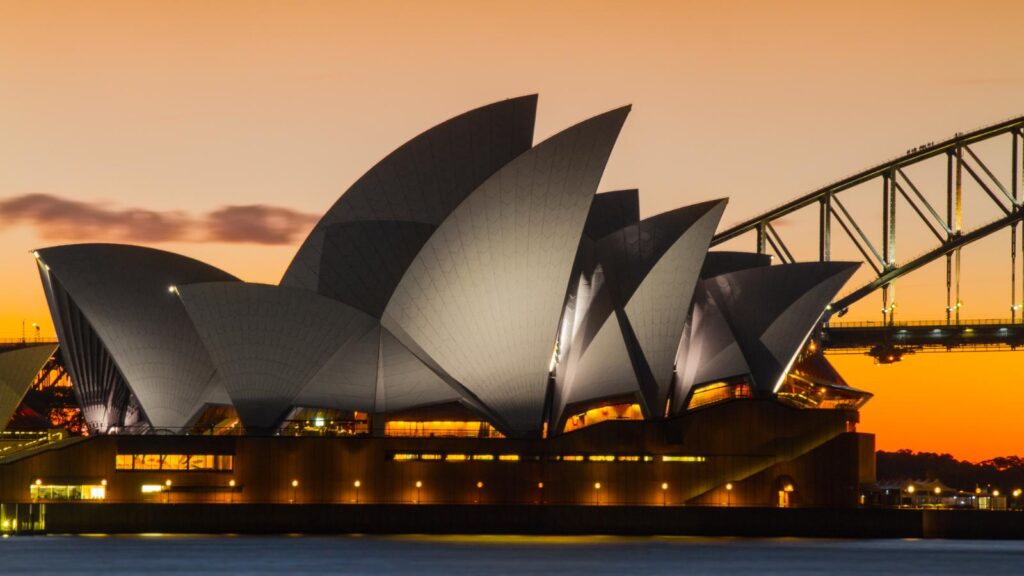
Located on Bennelong Point in Sydney, Australia, this UNESCO World Heritage Site is easily recognized by its one-of-a-kind design. Although initially expected to cost $7 million and take four years to build, it took $104 million and 14 years to construct. Much of the money came from a state lottery system.
The massive structure is large enough that seven A380 airplanes could sit onsite wing-to-wing. More than one million Swedish-made tiles cover the roof.
Nearly 11 million people fly in from around the world to visit the Sydney Opera House annually, including many famous guests like Queen Elizabeth II. The late Queen of England opened the opera house on October 20, 1973, and visited four times throughout her life.
The first opera performed was Sergei Prokofiev’s War and Peace in 1973. Other notable performers over the years include Thin Lizzy (1978), Crowded House (1996), and Prince (2016).
2. La Scala: The World’s Most Famous Opera House
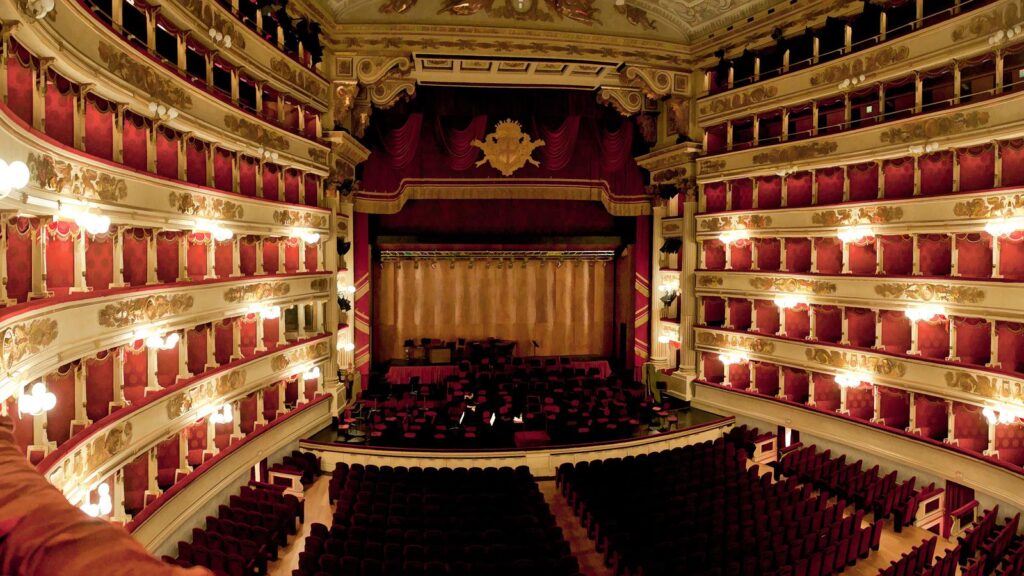
Although commonly referred to as La Scala, the full name of this Milan, Italy, opera house is The Teatro alla Scalla. It is one of the most famous opera houses in the world.
La Scala opened on August 3, 1778, and was initially called the New Royal-Ducal Theatre alla Scala. It was home to many opera and ballet performances before being heavily damaged during World War II. It was rebuilt and reopened in May 1946 with a concert featuring a soprano solo by opera sensation Renata Tebaldi.
There are 3,000 seats in the building, including six tiers of box seats known as the “loggione.” The loggione is where the most enthusiastic, if not ruthless, spectators sit. In 2006, a performer was booed off the stage during his rendition of Verdi’s Aïda. This caused his understudy to rush on stage as a replacement without even time for a costume change.
3. Metropolitan Opera House: The Largest in the World
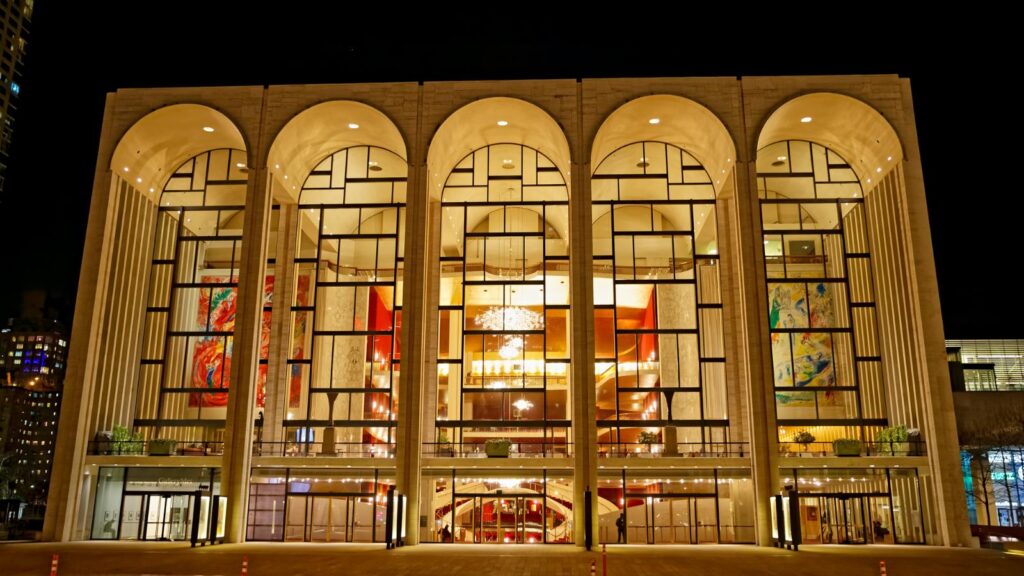
Originally built in 1883 by one of New York’s millionaires, Faust was the first opera ever performed on its stage. Later, the decision was made to move it to a new location, and a much larger, grander opera house was constructed.
The current Metropolitan Opera House resides in Manhattan at Lincoln Center for the Performing Arts, along with the New York Philharmonic, the New York City Ballet, and the Juilliard School. It has a capacity of 3,995 people, including standing room, making it the largest opera house in the world.
The Met was designed by the same architect as Rockefeller Center and is world-famous for its gold ceilings and enormous chandeliers. More than a million sheets of gold, each 23 carats, were carefully and individually applied to construct the ceiling. The project required so much gold that only a small amount was available to the Met each week so the project wouldn’t deplete the national reserves.
4. Royal Opera House: One of Europe’s Most Celebrated Opera Houses
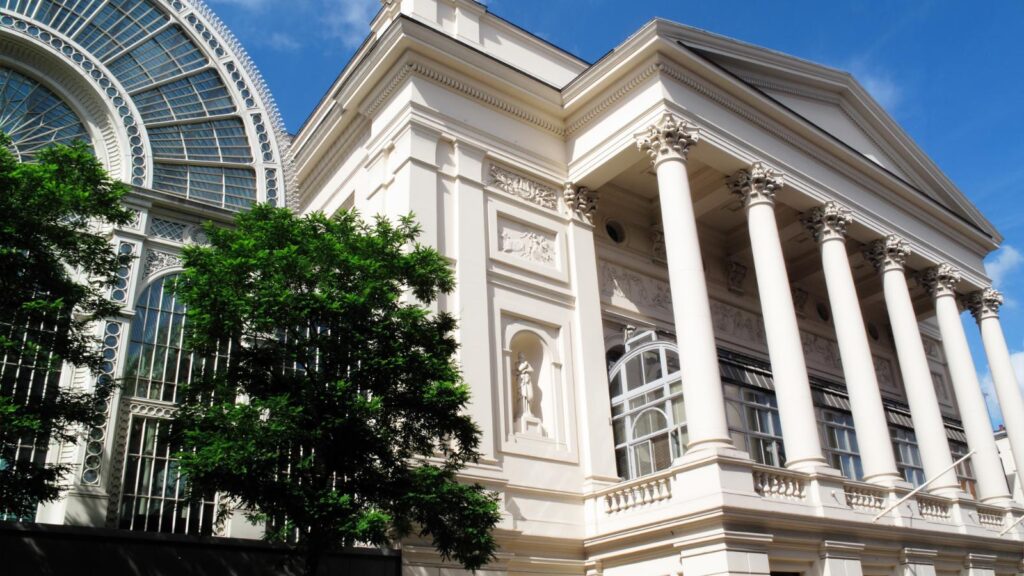
London’s Royal Opera House is one of the city’s most iconic and recognizable buildings. Referred to by locals as simply “Covent Garden,” it’s home to both the Royal Opera and the Royal Ballet, two of England’s most prestigious organizations.
Construction of the first building was in 1728, but a second, larger theatre was later built and opened in 1809 after a fire destroyed the original structure. Disaster struck again in 1856, when the second building burned to the ground. The third building opened in 1859 and is the one that stands today.
Significant renovations began on the third building in the 1960s, lasting for several decades. Much of the Royal Opera House now visible is a result of this renovation project.
More than one million people visit the Royal Opera House yearly to see major performances such as The Nutcracker performed by the Royal Ballet and The Barber of Seville by the Royal Opera.
5. Teatro Di San Carlo: The Oldest Working Opera House
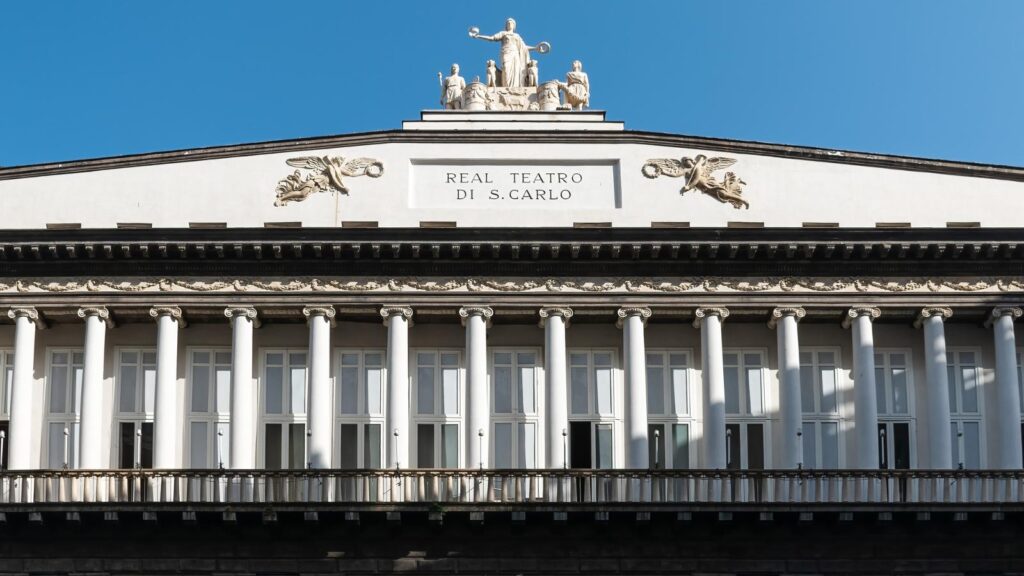
Real Teatro di San Carlo or “Royal Theatre of Saint Charles,” is often referred to as simply the Teatro San Carlo.
Located in Naples, Italy, it holds the title of the world’s oldest working opera house. Built in 1737 by The Bourbon King Charles, the majestic building has stood the test of time despite suffering significant damage.
Having survived wars, fires, and a revolution, the opera house has been renovated and enlarged over the years. Yet, the original structure remains at its heart, making Teatro San Carlo the oldest working opera house in the world.
There are a total of 1,379 seats in the opera house, including 184 boxes distributed in six tiers, plus a box for royalty. The original design included a mirror in each box that pointed to the royal box, and spectators were expected to watch the king to mimic his reactions.
6. Copenhagen Opera House: The World’s Most Expensive Opera House
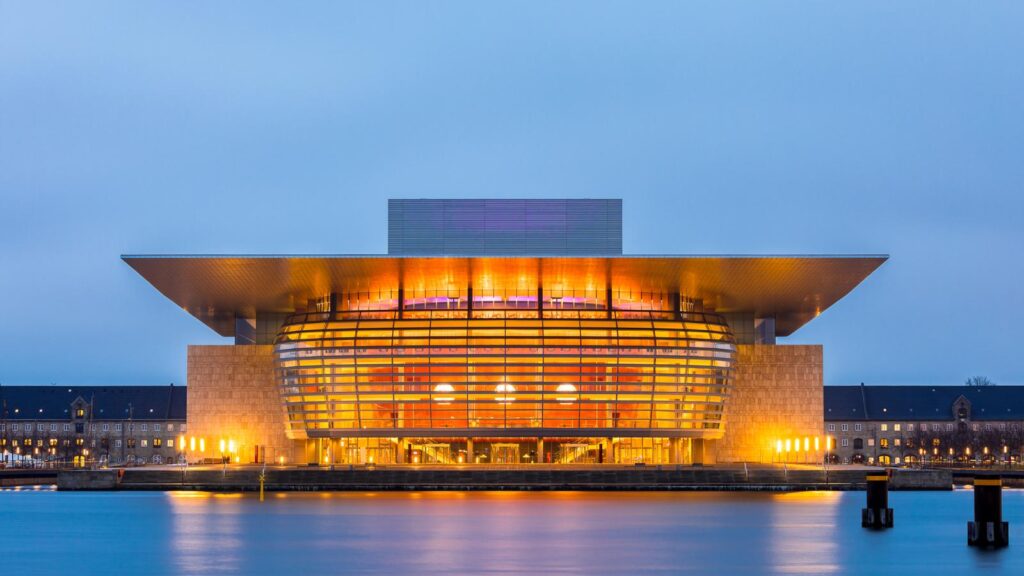
The modern and widely recognizable Copenhagen Opera House opened in 2005. However, the original building was inaugurated in 1748 and remained prominent in Danish society for more than 100 years.
Funded by the private investment of a Danish billionaire, much of the design was of his choosing. The opera house is located in Copenhagen’s harbor, giving the audience a fabulous view of the Copenhagen skyline.
The metal roof is a notable aspect of the design, which can be easily seen from a distance. The original design called for a glass ceiling, but it was constructed with metal to last longer.
Not only is the Copenhagen Opera House one of the newest built, but it is also the most expensive. The 2.5 billion DKK construction cost is equivalent to approximately 370 million USD.
7. Vienna State Opera: One of the Busiest Opera Houses in the World
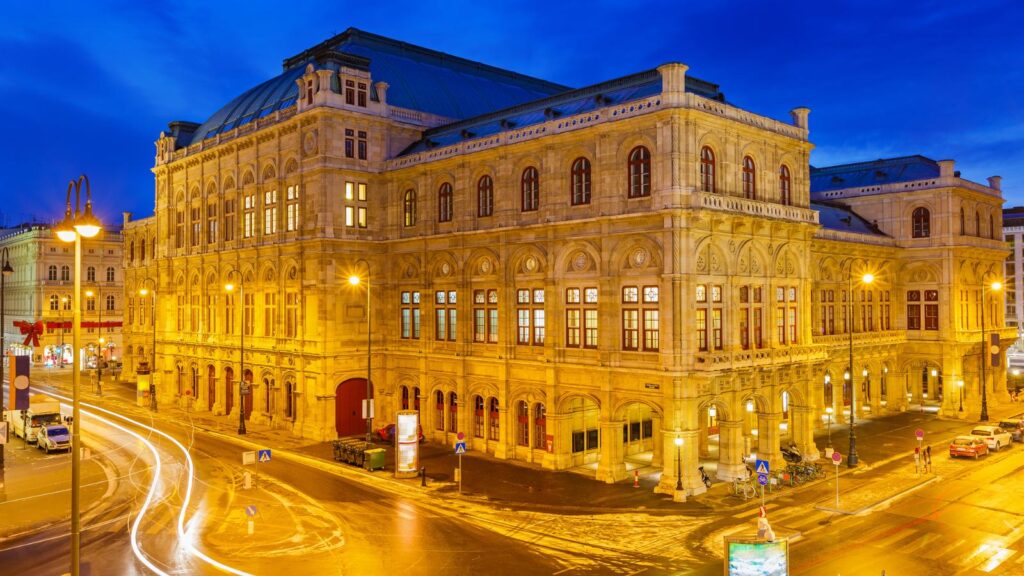
The Vienna State Opera House is one of Austria’s most prominent and noticeable buildings. Construction on the Neo-Renaissance style structure began in 1861 and took eight years to complete. The massive building is home to the Vienna State Opera and the Vienna State Ballet.
In March 1945, toward the end of WWII, bombing destroyed the auditorium and stage, along with a massive inventory of props and costumes for more than 120 operas. After much debate, the decision was made to reconstruct the opera house to its former glory, with a few modernizing improvements.
Today, the Vienna Opera House seats 1,709 people with standing room for 567 more, for a total capacity of 2,284. It is also one of the world’s busiest opera houses, producing 50-60 operas each season and more than 350 ballet performances. The opera house employs more than 1,000 people. It’s not uncommon for a different opera to be produced every day of the week.
8. Palais Garnier: A Symbol of Paris With a Ghostly Past
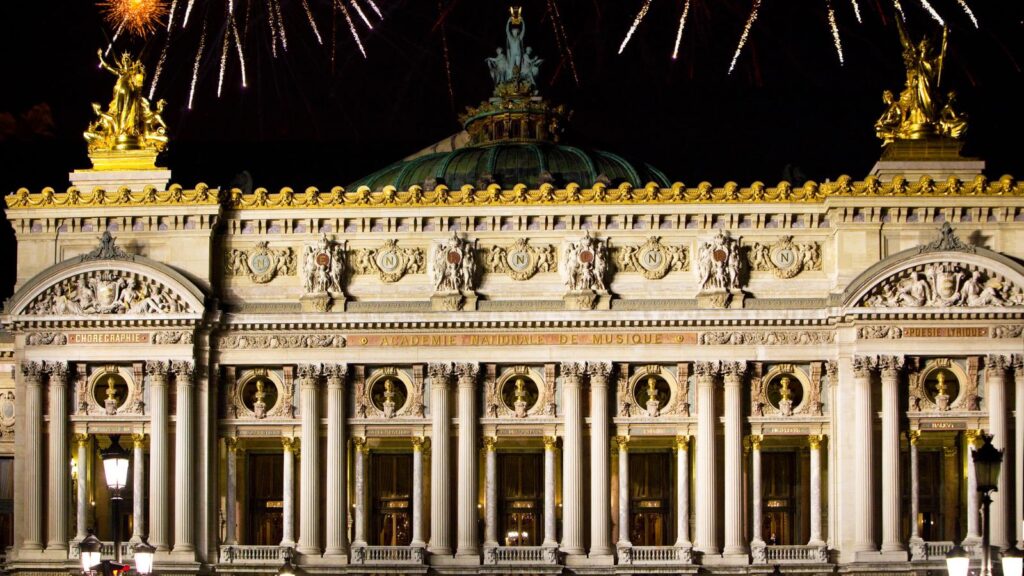
Originally named Opera le Pelletier (Old Opera House), this magnificent Parisian structure got a new name after being destroyed by a fire. It was named Le Nouvel Opéra de Paris (the New Opera House) after reconstruction. Later, to reflect its grandeur and to honor Charles Garnier, the design architect, it was again renamed Palais Garnier.
It took 14 years to build Palais Garnier, with construction starting in 1861 and ending in 1875.
Palais Garnier is one of Europe’s largest opera houses, with a seating capacity of 1,979 people and an enormous stage that can fit 450 performers. The horseshoe-style auditorium boasts the largest stage in Europe. The stage is built at a slant to provide better viewing for the audience and give an illusion of depth.
The opera house has another, more recognizable claim to fame. In May 1896, one of the counterweights used for the massive chandelier fell and killed a concierge. French author Gaston Leroux later added the scene to his now-famous novel, Phantom of the Opera. When Andrew Lloyd Weber wrote his opera of the same name, he used Palais Garnier as the setting.
Final Thoughts
There are many extravagant buildings in the world, from Las Vegas, Nevada, to Dubai, Saudi Arabia, but few rival the exquisite detail and design of some of the world’s most famous opera houses.
This article was produced by Wealth of Geeks and syndicated by Our Woven Journey.
Karee Blunt is a nationally syndicated travel journalist, focused on discovering destinations and experiences that captivate and inspire others through her writing. She is also the founder of Our Woven Journey, a travel site focused on inspiring others to create memory-making adventures with their loved ones. Karee is passionate about encouraging others to step out of their comfort zone and live the life they dream of. She is the mother of six kids, including four through adoption, and lives with her family in the Pacific Northwest. You can learn more about Karee on her about me page.
